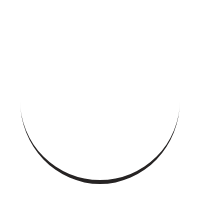Luni Archaeological Site – 10 mslm
Luni (called Ortonovo until 2017) is a town in the province of La Spezia whose historic centre stands on one of the hills that thin out towards the valley of the Magra river, which represents its flat portion.
What is most interesting to see is in the locality of Luni Scavi, also called Luni Antica, which houses the ruins of the ancient Roman colony of Luna and the Luni National Archaeological Museum, which are the final destinations of the Sentiero dei Ducati that intersects here the Via Francigena.
The name of the city – which also originated the name of Luigiana to the whole mountainous region around the valle of the Magra river – would derive from its consecration to the Roman goddess “Luna”, perhaps by Marco Emilio Lepido, who participated in its foundation in 177 BC after the defeat of the Apuan Ligurians, or perhaps from the sickle shape of the city harbour, an important commercial port on the Ligurian Sea since ancient times, and used under the
control of the Ligurians as a berth for commercial ships by both the Etruscans and the Greeks, to whom we owe the first consecration of this port to the goddess Selene (“Luna” for the ancient Romans).
The Roman settlement, built on a pre-existing site (probably an Etruscan emporium controlled by the Ligurians) developed throughout the republican period and had to grow in importance starting from the first imperial period thanks to the intensification of the exploitation of the nearby marble quarries. An earthquake, which occurred during the fourth century, ended the imperial city. The area was however still frequented in later times until the almost total abandonment occurred around the end of the ninth century to escape the continuous Saracen raids. In 860 Luni was definitively destroyed by the “Vikings”, the Danish Normans led by King Hasting. Legend says that Vikings had looted Luni by mistake because, being admired by its splendor and pomp, they believed that it was Rome, destination of their raids.
To be visited in the archaeological area the several public areas of the Roman city such as the forum, the Capitoline area and the decumanus maximus, the civil Basilica, the curia and the thistle maximus, the Great Temple and some stately homes (Domus of the Mosaics, Northern Domus , Domus of the Frescoes). In addition, the suggestive remains of the Roman amphitheater, located outside the ancient city walls.
| +39 0187 66811 | |
| pm-lig.museoluni@beniculturali.it | |
| www.luni.beniculturali.it | |
| Luni |

